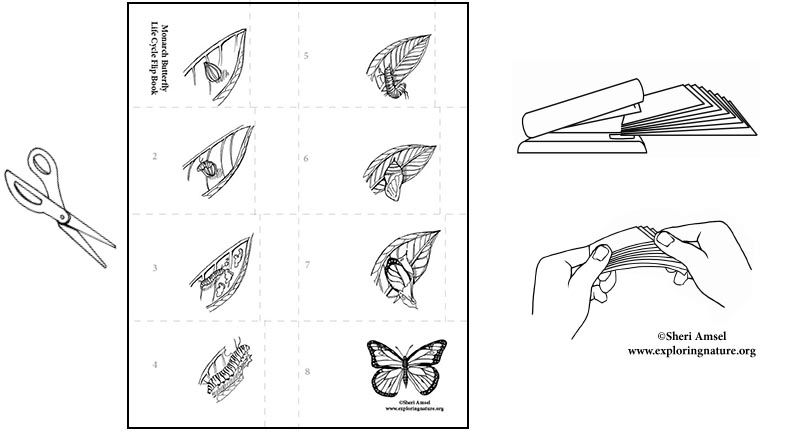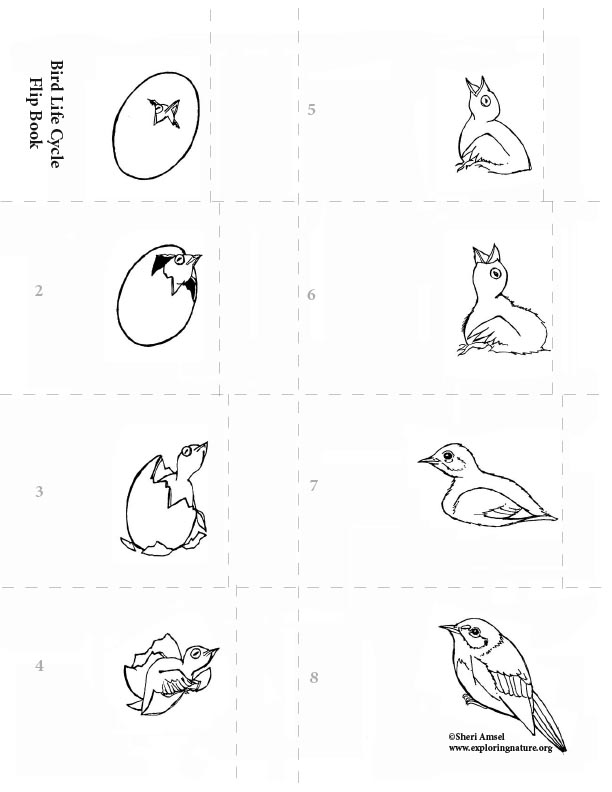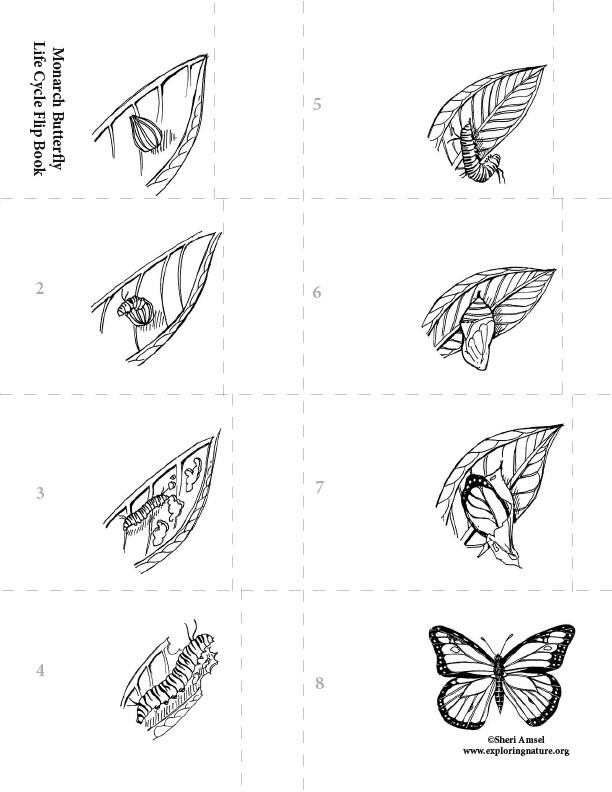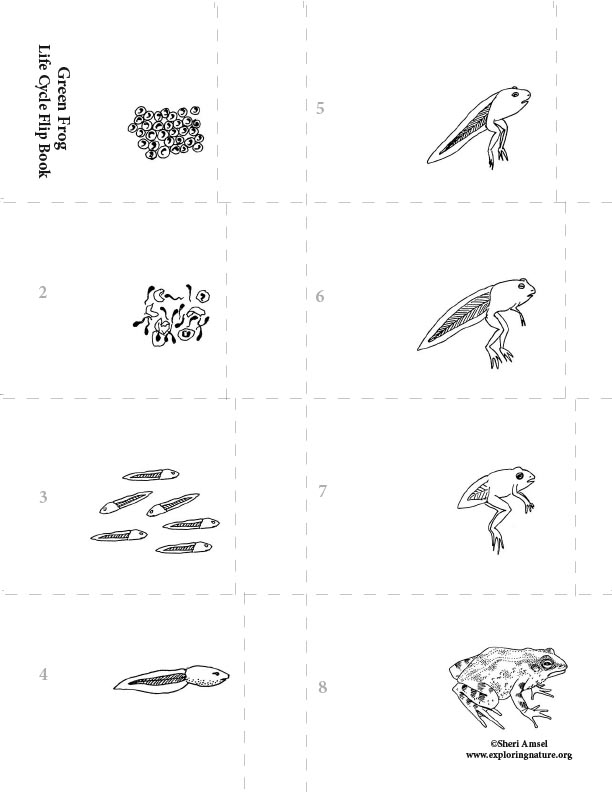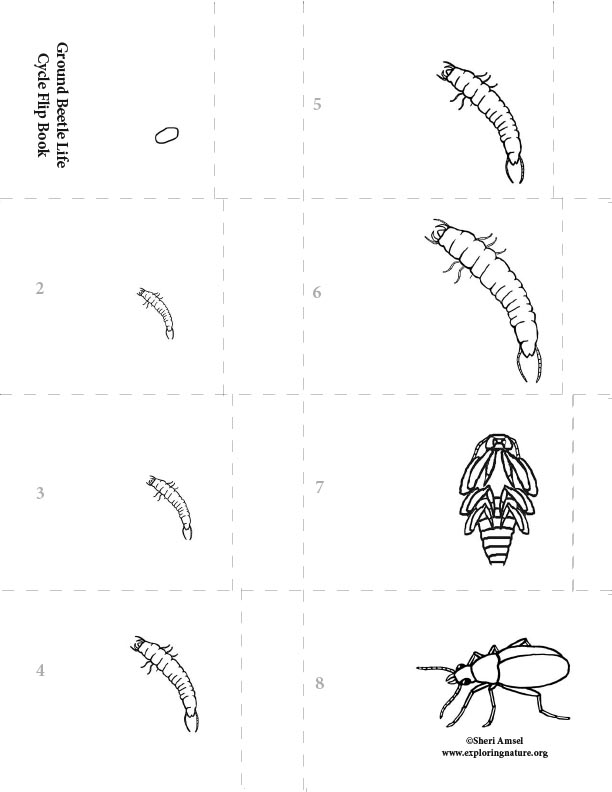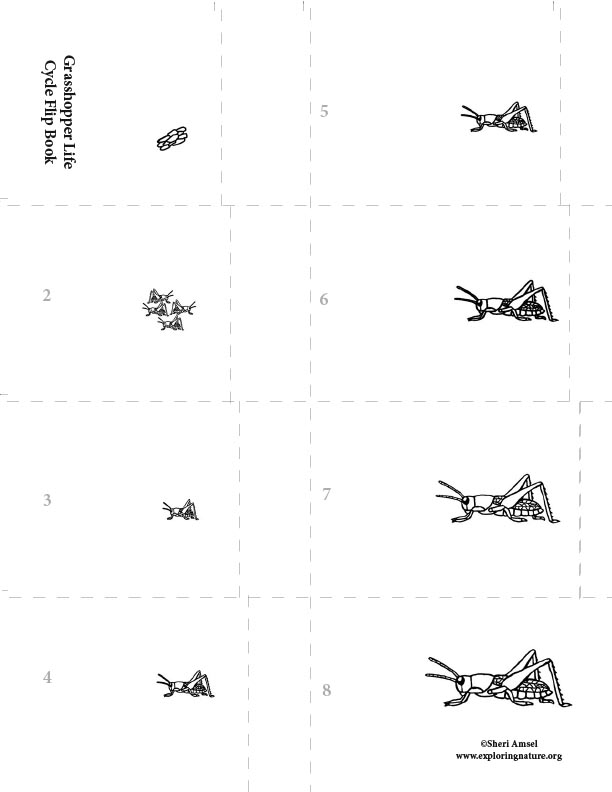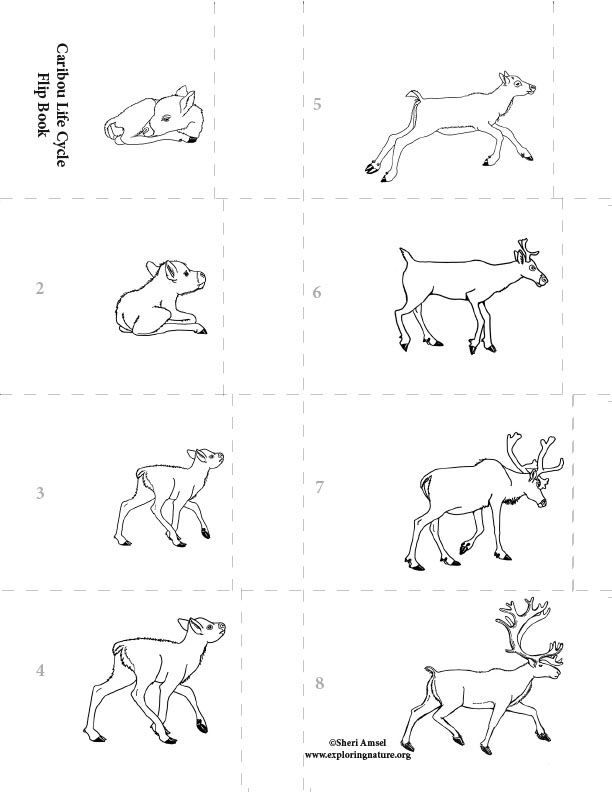

The study of life cycles is how we come to understand the Growth and Development of Organisms. Creating Life Cycle Flip Books gives students a chance to create and study their own life cycle models. Using the different life cycle flip book inserts pages, create a whole collection of life cycle models for the study and understanding of the growth and development of animals and plants.
Steps for making a flip book:
1) Print out the Animal (or Plant) insert page of your choice.
2) Color each piece.
3) Cut along the dotted lines to create 8 flip pages (the ends will be longer as you count from piece 1 to 8).
4) Arrange the pieced in numbered order and make sure the bottom edges line up.
5) Staple the bottom end.
6) Carefully flip through your book and watch the life cycles come to life.
Disciplinary Core Ideas – LS1.B: Growth and Development of Organisms
• Reproduction is essential to the continued existence of every kind of organism. Plants and animals have unique and diverse life cycles. (3-LS1-1)
Crosscutting Concepts - Patterns
• Patterns of change can be used to make predictions. (3-LS1-1)
Science and Engineering Practices - Developing and Using Models
Modeling in 3–5 builds on K–2 experiences and progresses to building and revising simple models and using models to represent events and design solutions.
• Develop models to describe phenomena. (3-LS1-1)
Performance Expectations - Students who demonstrate understanding can:
3-LS1-1. Develop models to describe that organisms have unique and diverse life cycles but all have in common birth, growth, reproduction, and death.
When you research information you must cite the reference. Citing for websites is different from citing from books, magazines and periodicals. The style of citing shown here is from the MLA Style Citations (Modern Language Association).
When citing a WEBSITE the general format is as follows.
Author Last Name, First Name(s). "Title: Subtitle of Part of Web Page, if appropriate." Title: Subtitle: Section of Page if appropriate. Sponsoring/Publishing Agency, If Given. Additional significant descriptive information. Date of Electronic Publication or other Date, such as Last Updated. Day Month Year of access < URL >.
Amsel, Sheri. "Life Cycle Flip Books - NEW and Improved" Exploring Nature Educational Resource ©2005-2024. December 14, 2024
< http://www.exploringnature.org/db/view/1325 >
